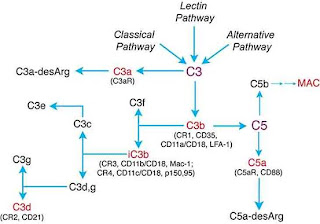As seen with cellular organisms, our ability to rapidly and accurately sequence multiple viral genomes at low cost is being overtaken by our inability to analyse the functional roles that certain genes – including regions within genes- play in a range of phenotypic processes during an infection. Lack of functional studies represents a major roadblock to understanding the basic biology of these pathogenic organisms and prevents us from generating safe and efficacious vaccines or virotherapies.
High-Resolution Functional Mapping of the Venezuelan Equine Encephalitis Virus Genome by Insertional Mutagenesis and Massively Parallel Sequencing
The United States Army Medical Research Institute of Infectious Diseases, Fort Detrick, Maryland, United States of America
We have developed a high-resolution genomic mapping technique that combines transposon-mediated insertional mutagenesis with either capillary electrophoresis or massively parallel sequencing to identify functionally important regions of the Venezuelan equine encephalitis virus (VEEV) genome. We initially used a capillary electrophoresis method to gain insight into the role of the VEEV nonstructural protein 3 (nsP3) in viral replication. We identified several regions in nsP3 that are intolerant to small (15 bp) insertions, and thus are presumably functionally important. We also identified nine separate regions in nsP3 that will tolerate small insertions at low temperatures (30°C), but not at higher temperatures (37°C, and 40°C). Because we found this method to be extremely effective at identifying temperature sensitive (ts) mutations, but limited by capillary electrophoresis capacity, we replaced the capillary electrophoresis with massively parallel sequencing and used the improved method to generate a functional map of the entire VEEV genome. We identified several hundred potential ts mutations throughout the genome and we validated several of the mutations in nsP2, nsP3, E3, E2, E1 and capsid using single-cycle growth curve experiments with virus generated through reverse genetics. We further demonstrated that two of the nsP3 ts mutants were attenuated for virulence in mice but could elicit protective immunity against challenge with wild-type VEEV. The recombinant ts mutants will be valuable tools for further studies of VEEV replication and virulence. Moreover, the method that we developed is applicable for generating such tools for any virus with a robust reverse genetics system.
Beitzel et al recently publish the development of a ‘high-resolution genomic mapping technique’ that will facilitate the easier investigation of particular viral genes in a range of virus/host interactions. Venezuelan equine encephalitis virus, endemic to South America, is an important zoonotic pathogen that continually re-emerges from its rodent reservoir via a mosquito vector causing potentially fatal encephalitis in both humans and horses. There is currently no vaccines or anti-viral treatments for this disease and the exact roles that each of its 8 proteins play in its basic biology and replication are currently being investigated, hoping to yield helpful insight.
Studying the role of nsP3 gene in VEEV but later expanding it the rest of the genome, the group used a technique called transposon mutagenesis in which a short (15 nucleotides) DNA fragment is inserted randomly into the target gene or genome being studied. They generated a large cDNA library with high coverage in that every nucleotide had been targeted around 200 times and using high- throughput DNA sequencing were able to map the inserts at a high resolution and record the frequency that they were present at. Combining this with a reverse genetics system, they generated recombinant infectious virus carrying and expressing the inserts in order to assess their function in replication and initially, the group assessed the role that these inserts had on replication at particular temperatures.
By altering the temperatures in which the viruses were grown they were to able to effectively screen for a particular phenotype (the ability to grow at 40 degrees for example) and easily map the locations that would and would-not tolerate the 15bp insertions. Using this method they generated temperature sensitive (ts) mutants that were able to replicate at one temperature (30) and not at another (40).










